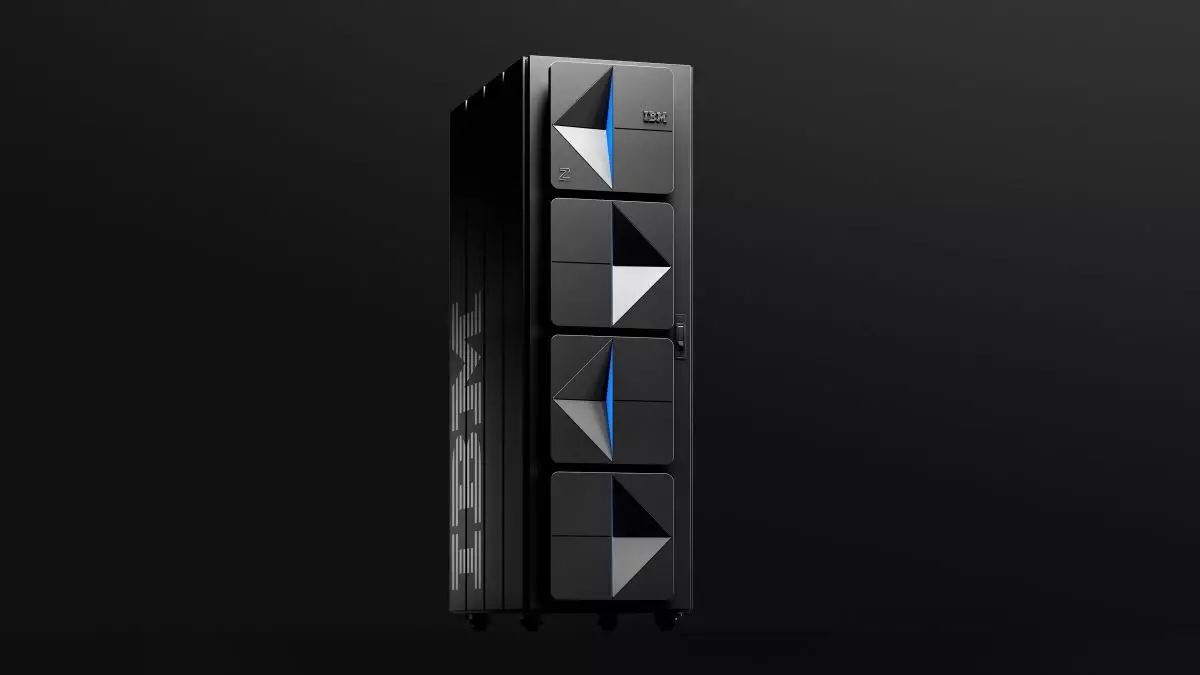IBM’s latest engineering marvel, the z17 mainframe, is not just an incremental update to its legacy lineup but rather a powerful disruption poised to reshape the artificial intelligence landscape. Unveiled with much anticipation due to its sophisticated capabilities, the z17 is set to usher in the age of AI integration on a scale that was previously unimaginable. Featuring the advanced IBM Telum II processor, this fully encrypted mainframe supports over 250 AI applications, including the burgeoning use of generative AI and AI-driven agents. What is often perceived as a technology from the past is, in fact, a cornerstone for modern digital transformations, especially as 71% of Fortune 500 companies continue to rely on mainframe technologies, according to recent reports.
Unprecedented Processing Power at Your Fingertips
IBM has declared that its z17 can handle an astonishing 450 billion inference operations daily, reflecting a 50% leap in performance compared to its predecessor, the IBM z16. This remarkable capability positions the z17 as a critical asset for businesses eager to harness AI’s potential. Imagine harnessing that level of power to optimize customer interactions, automate decision-making processes, and tailor experiences in real-time. In an era where speed and efficiency are non-negotiable, the z17 delivers both — enabling organizations to process vast amounts of data seamlessly and effortlessly.
As IT landscapes evolve, the z17 is conveniently designed to integrate with various existing hardware, software, and open-source environments. This flexibility allows businesses to transform their legacy systems into agile powerhouses capable of meeting the demands of modern consumers and industries.
A Five-Year Labor of Love
Developed over five years, the z17 is a prime example of IBM’s commitment to marrying research with real-world applicability. Tina Tarquinio, VP of product management and design for IBM Z, notes that the z17’s evolution has been heavily influenced by direct feedback from over 100 customers. This dialogue has enabled IBM to fine-tune its offerings, anticipating market demands and solidifying its position as a thought leader in the AI space.
The timing of the z17’s release coincides perfectly with the rising tide of AI interest, primarily catalyzed by innovations like OpenAI’s ChatGPT. With the rapid advancements we’ve seen in AI tools, it feels as if the z17 could be a pivotal player in creating solutions that we haven’t even conceptualized yet. Tarquinio’s assertion that, “we don’t know what we don’t know about what’s coming,” encapsulates the spirit of innovation that IBM embodies, as they embrace the unknown possibilities that this new frontier presents.
Future-Proofing AI in the Mainframe
Even as AI technologies advance at breakneck speed, the z17 is ingeniously designed for adaptability. Set to support an impressive 48 IBM Spyre AI accelerator chips at launch, IBM anticipates scaling this to 96 within a year. This strategic foresight addresses the hearts of modern AI needs, as tools and models will continue to evolve with unprecedented velocity. The proactive scaling approach that IBM has taken ensures that organizations investing in their platforms aren’t just buying technology but securing a versatile and resilient foundation for the future.
Moreover, it’s impressive to note that the z17 has been crafted with energy efficiency at its core. Tarquinio highlights enhancements boasting a 7.5 times increase in AI acceleration while simultaneously consuming 5.5 times less energy compared to competitor platforms. This green efficiency will undoubtedly resonate with companies facing pressure not only to innovate but to do so sustainably.
A Paradigm Shift for AI Adoption
As the z17 mainframe prepares for general availability, scheduled to hit the market on June 8, 2024, it symbolizes not only an evolution of IBM’s technical capabilities but also its understanding of the foundational role that AI will play across industries. IBM’s vision for the z17 transcends traditional mainframe usage, setting the stage for a future where intelligent automation and decision-making will flourish in an environment of data-rich interactions.
These advancements are promising, not just for organizations looking to update their systems but for everyone aiming for smarter, more effective operations. Indeed, the z17 could very well serve as a catalyst for a broader recognition of AI’s transformative potential, leading to widespread opportunities in various sectors.

